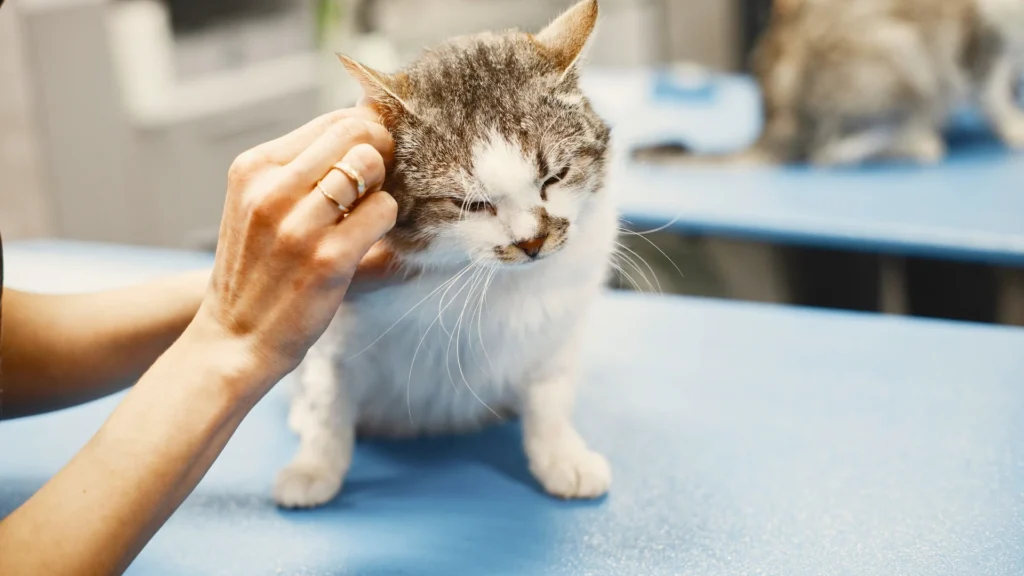Table of Contents
Cats have an exceptional sense of hearing. They can hear things from far away, even sounds four times farther than we can. They also listen to noises that are too high-pitched for us.
Cats are good at figuring out where a sound is coming from. They have a built-in sound radar that we can only wish for. This incredible skill helps them a lot.
They can quickly tell if something dangerous is nearby or if something is interesting to chase, whether they are outside or playing inside the house. Discover the fascinating world of feline hearing and explore the range of sounds cats can detect. Join me as we delve deeper into this intriguing topic!
Hearing Range of Cats

Cats have excellent hearing abilities! They can detect a broad range of noises., from high-pitched to low-pitched. You can think of pitch as how fast a sound goes up and down.
Humans can hear sounds that go from 64 to 26,000 times per second. That’s pretty good. Well, cats are even better! They can hear sounds from 48 to 85,000 times per second. So, cats can hear sounds much higher than we can hear. If we were to compare how far cats can listen to compared to us, it’s like they can listen to things 4 to 5 times farther away. That’s pretty impressive!
What Makes Cats' Ears So Special? A List of Unique Features

Cats aren’t your typical animals when it comes to hearing. Their ears are like a superpower, designed by evolution to be extraordinary. Here’s a closer look at what makes a cat’s ears so unique:
- Pinna: This is the external ear flap, which can rotate up to 180 degrees. It helps capture sound waves and direct them into the ear canal.
- High-Frequency Range: Cats can hear sounds at frequencies higher than humans and even dogs. This range allows them to detect the high-pitched sounds made by their prey.
- Sensitive Inner Ear: The inner ear contains cells that can detect even the slightest vibrations, allowing cats to hear better than many other mammals.
This ability is crucial for hunting, allowing the cat to pinpoint precisely where its prey hides. So, while we might be impressed by the latest audio technology, nature has already equipped our feline friends with a state-of-the-art sound system.
What Happens if a Cat Can't Hear?

While some cats lose hearing gradually as they grow up, some are deaf from birth. The majority of cats usually develop rapid hearing loss as a result of disease or trauma.
While some cats lose hearing gradually as they grow up, some are deaf from birth. The majority of cats typically experience abrupt hearing loss as a result of disease or trauma. Fortunately, deaf cats adapt quickly to their environments and adjust to their lack of hearing by using their other senses more.
How Can I Protect My Cat's Hearing?

t’s important to understand that your cat can hear and that loud music and TV may cause stress for your cat, despite your personal preference.
Pay heed to these signals and turn down the volume if you observe your cat reacting badly to sounds in your house.
Loud noises can frighten your cat, especially if they’re unfamiliar. Cats do not see television and music in the same manner as people. Realize that your cat might find it too much.
Cats don’t require assistance keeping their ears clean, but you should check them sometimes for infection symptoms. Cats with ear infections may experience pain and have trouble hearing and maintaining balance.
Symptoms of an infection include
- Red or inflamed ear tissue
- Cats shaking their heads frequently
- Cats scratching at their ears
- Reactions in pain to their ears being touched
- and a foul odor in the ears
- Yellow or black discharge.
Fortunately, ear infections are usually easy to diagnose and treat. If you notice these signs, have your cat examined by a veterinarian. Careful diagnosis will be necessary to determine the bacteria present and which course of action to treat it.
Do Cats Hear Better? A Simple Comparison: Cat vs. Dog & Human Hearing Range
To gain a better understanding of the distinctions in hearing abilities among cats, humans, and dogs, let’s examine a comparative table.
| Mammal | Lowest Frequency (Hz) | Highest Frequency (Hz) |
|---|---|---|
| Cat | 48 | 85,000 |
| Human | 20 | 20,000 |
| Dog | 67 | 45,000 |
Looking at the table, it’s clear that cats can hear a broader range of sounds, especially the high-pitched ones. This means they can listen to things that dogs and humans can’t. It’s interesting to realize that when you’re with a cat, they’re hearing all sorts of sounds you can’t even hear!
How Do You Call A Cat From Far Away?

You can call their name or use a sound they’ll learn to recognize, such as shaking their favorite packet of treats or tapping a spoon on their can of food. Start calling your cat when they’re nearby, and if they return, offer them a treat. Gradually increase the distance before you call them back.
You can whistle, call “Kitty, Kitty,” slap your thighs, or do anything else. Just train kitty to come by performing this act a… Make sure that you know their name or the one you call cats. Use it when they are being good or when you are feeding them.
Frequently Asked Question
A firm stomp on the floor uses vibration to communicate your presence and causes your cat to look around for the source. You can then call your cat to you or head toward the food dish. Stroking, brushing, and combing may comfort a deaf cat. Purring is a tactile experience – it causes a vibration.
Common signs of deafness include:
- You may have entered the house.
2 They do not react to familiar sounds like their name, loud noises, or objects that make a noisy sound.
- Stronger mewling.
- I am not startled by loud noises, such as a door opening.
- An increase in sleeping.
- Heightened sense of smell and temperature.
Deaf pets are more aware of air currents and vibrations. A deaf pet might sense the breeze from a door opening, for instance, as a sign that someone has arrived. Because they cannot control their “volume,” some deaf cats meow more frequently and loudly than others, and some even go silent.
After getting antibiotic therapy, cats who were deaf due to bacterial infections could become hearing again. Depending on the specific disease, recovery from various reasons is different. Natural deaf does not currently have an effective treatment—many cats who are deaf, whether entirely or partially, adjust to their condition quite well.
Conclusion
The world of kitty hearing is fascinating as well as challenging. As we’ve seen, cats can pick up a broad range of noises, higher than our human capacity. This extraordinary ability helps them with their natural desires and improves their link with us.
We may create a more pleasant and sympathetic environment for our animals by recognizing and respecting their extraordinary hearing. Remember that our cats are tuned into a symphony of noises in the whispers of our homes, reminding us of these cherished animals’ unique and mysterious nature.











